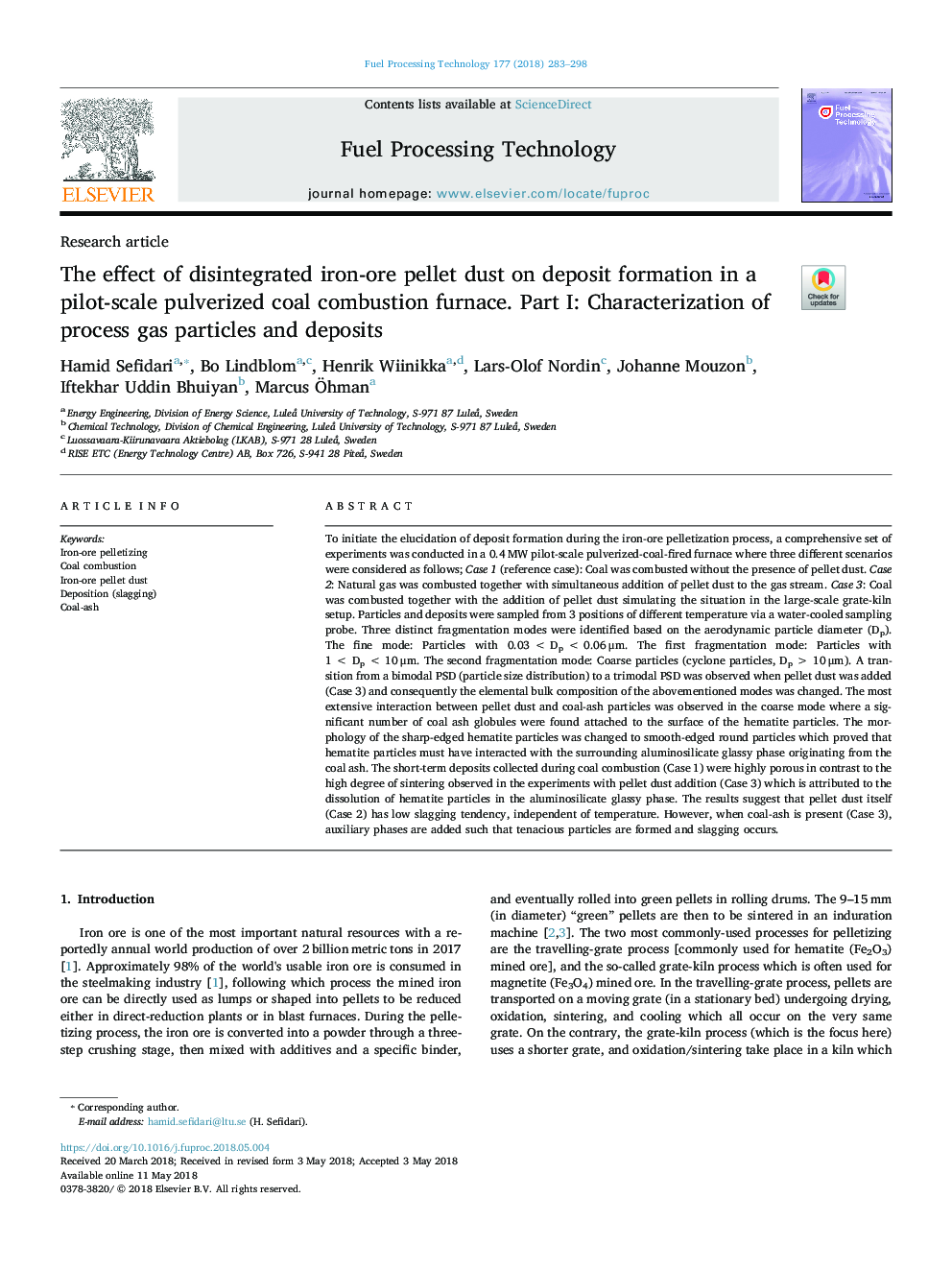| کد مقاله | کد نشریه | سال انتشار | مقاله انگلیسی | نسخه تمام متن |
|---|---|---|---|---|
| 6656338 | 1425369 | 2018 | 16 صفحه PDF | دانلود رایگان |
عنوان انگلیسی مقاله ISI
The effect of disintegrated iron-ore pellet dust on deposit formation in a pilot-scale pulverized coal combustion furnace. Part I: Characterization of process gas particles and deposits
ترجمه فارسی عنوان
اثر آلودگی غبار پراکنده سنگ آهن در شکل گیری رسوب در یک کوره احتراق زغال سنگ پالستیکی. قسمت اول: تشریح ذرات و رسوبات فرآیند گاز
دانلود مقاله + سفارش ترجمه
دانلود مقاله ISI انگلیسی
رایگان برای ایرانیان
کلمات کلیدی
ذوب آهن، احتراق زغال سنگ، گرد و غبار پودر آهن سنگ آهن، رسوب (سرباره)، ذغال سنگ خاکستر،
موضوعات مرتبط
مهندسی و علوم پایه
مهندسی شیمی
مهندسی شیمی (عمومی)
چکیده انگلیسی
To initiate the elucidation of deposit formation during the iron-ore pelletization process, a comprehensive set of experiments was conducted in a 0.4â¯MW pilot-scale pulverized-coal-fired furnace where three different scenarios were considered as follows; Case 1 (reference case): Coal was combusted without the presence of pellet dust. Case 2: Natural gas was combusted together with simultaneous addition of pellet dust to the gas stream. Case 3: Coal was combusted together with the addition of pellet dust simulating the situation in the large-scale grate-kiln setup. Particles and deposits were sampled from 3 positions of different temperature via a water-cooled sampling probe. Three distinct fragmentation modes were identified based on the aerodynamic particle diameter (Dp). The fine mode: Particles with 0.03â¯<â¯Dpâ¯<â¯0.06â¯Î¼m. The first fragmentation mode: Particles with 1â¯<â¯Dpâ¯<â¯10â¯Î¼m. The second fragmentation mode: Coarse particles (cyclone particles, Dpâ¯>â¯10â¯Î¼m). A transition from a bimodal PSD (particle size distribution) to a trimodal PSD was observed when pellet dust was added (Case 3) and consequently the elemental bulk composition of the abovementioned modes was changed. The most extensive interaction between pellet dust and coal-ash particles was observed in the coarse mode where a significant number of coal ash globules were found attached to the surface of the hematite particles. The morphology of the sharp-edged hematite particles was changed to smooth-edged round particles which proved that hematite particles must have interacted with the surrounding aluminosilicate glassy phase originating from the coal ash. The short-term deposits collected during coal combustion (Case 1) were highly porous in contrast to the high degree of sintering observed in the experiments with pellet dust addition (Case 3) which is attributed to the dissolution of hematite particles in the aluminosilicate glassy phase. The results suggest that pellet dust itself (Case 2) has low slagging tendency, independent of temperature. However, when coal-ash is present (Case 3), auxiliary phases are added such that tenacious particles are formed and slagging occurs.
ناشر
Database: Elsevier - ScienceDirect (ساینس دایرکت)
Journal: Fuel Processing Technology - Volume 177, August 2018, Pages 283-298
Journal: Fuel Processing Technology - Volume 177, August 2018, Pages 283-298
نویسندگان
Hamid Sefidari, Bo Lindblom, Henrik Wiinikka, Lars-Olof Nordin, Johanne Mouzon, Iftekhar Uddin Bhuiyan, Marcus Ãhman,
